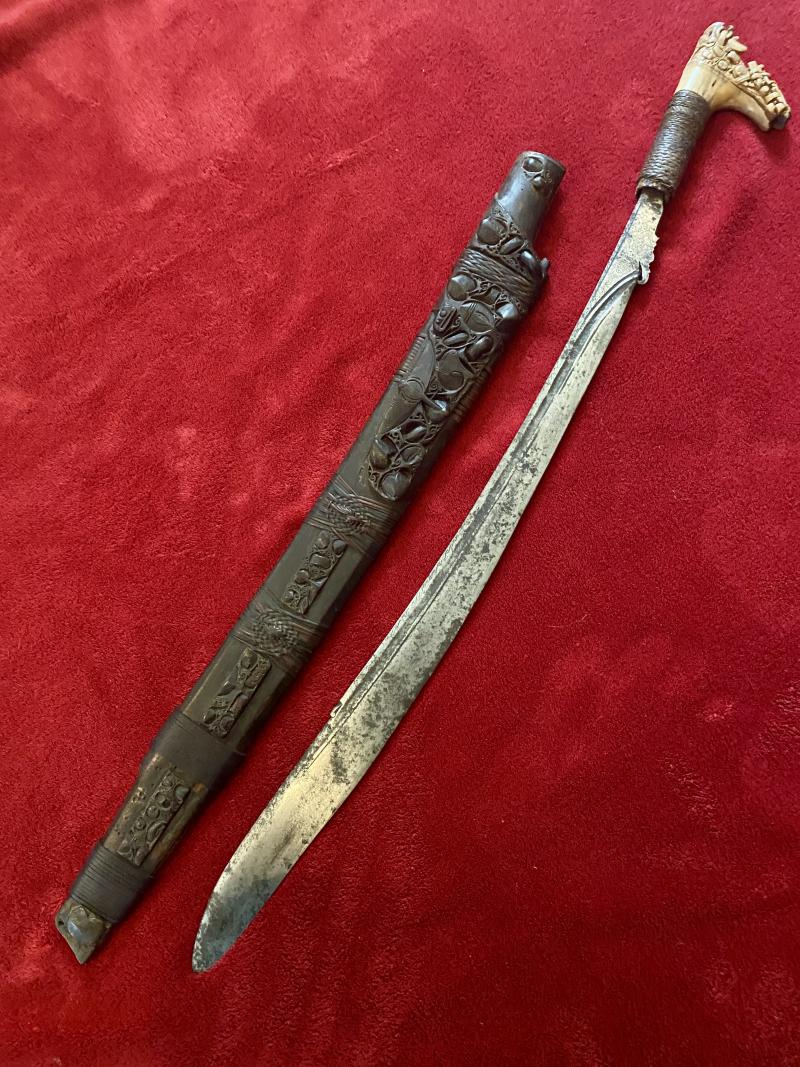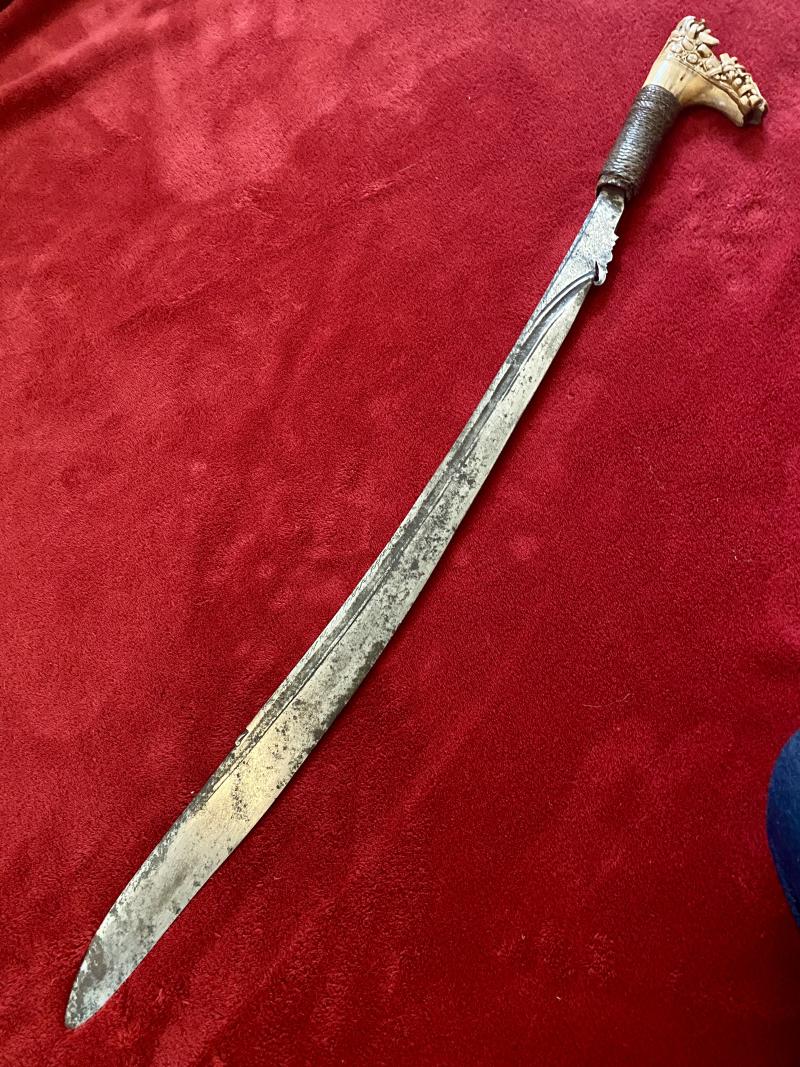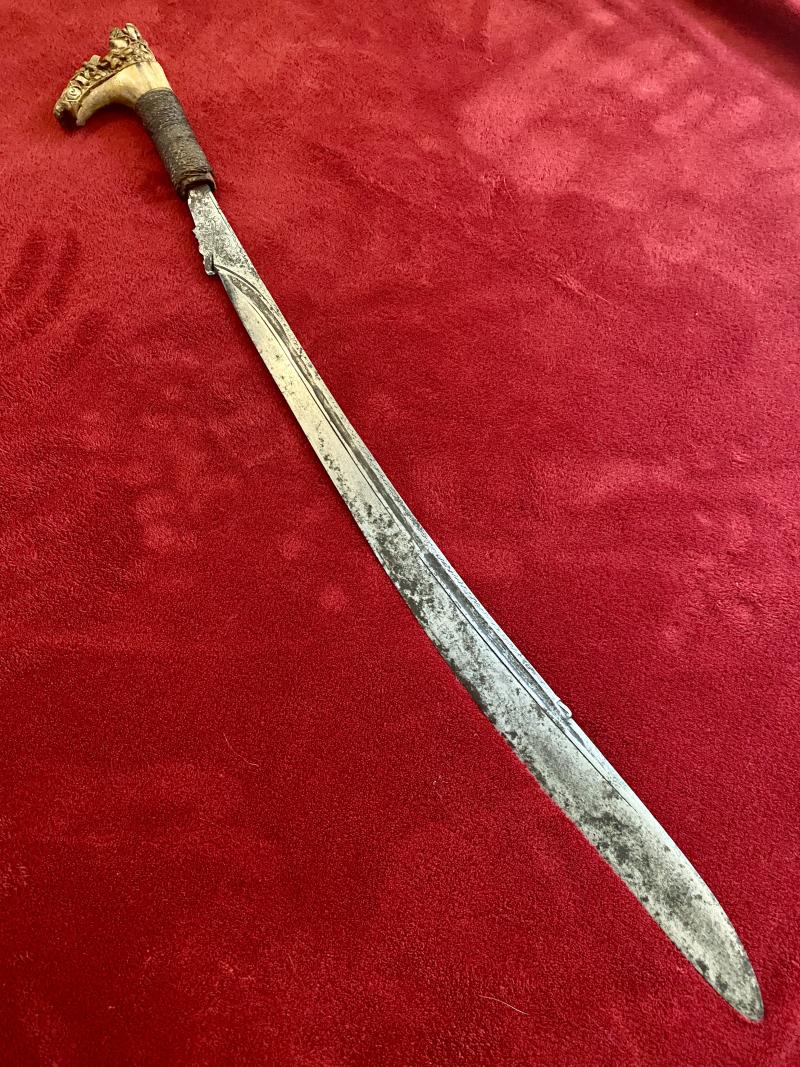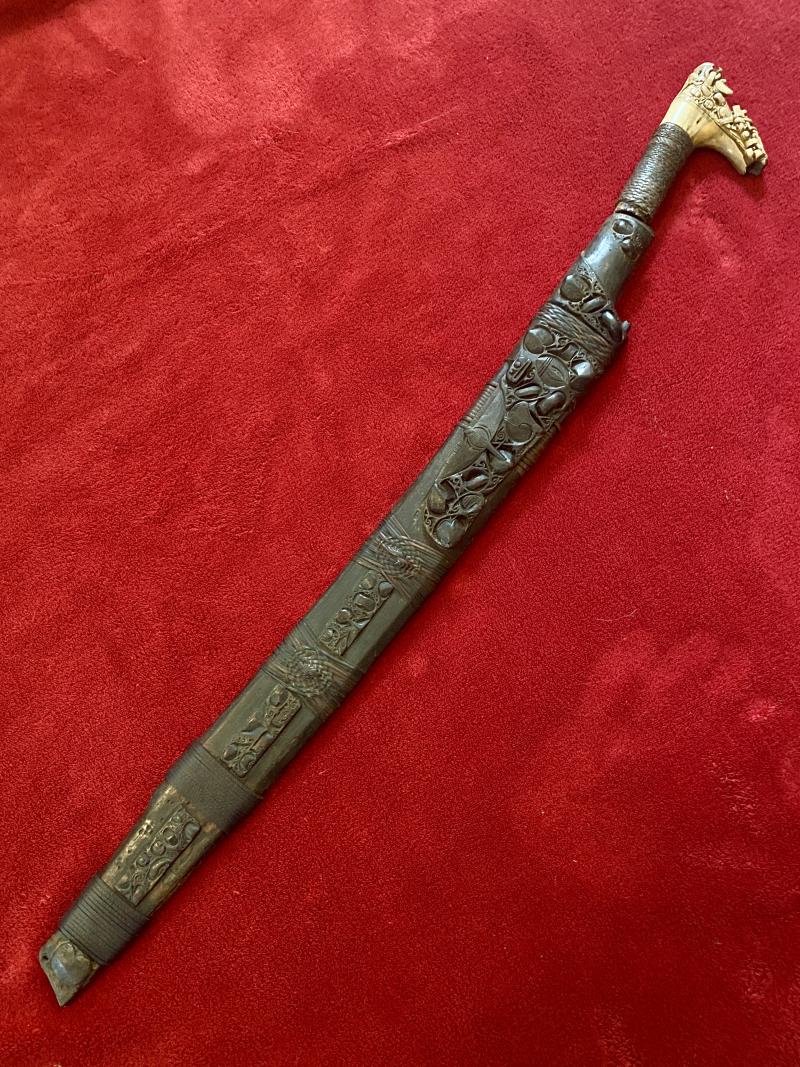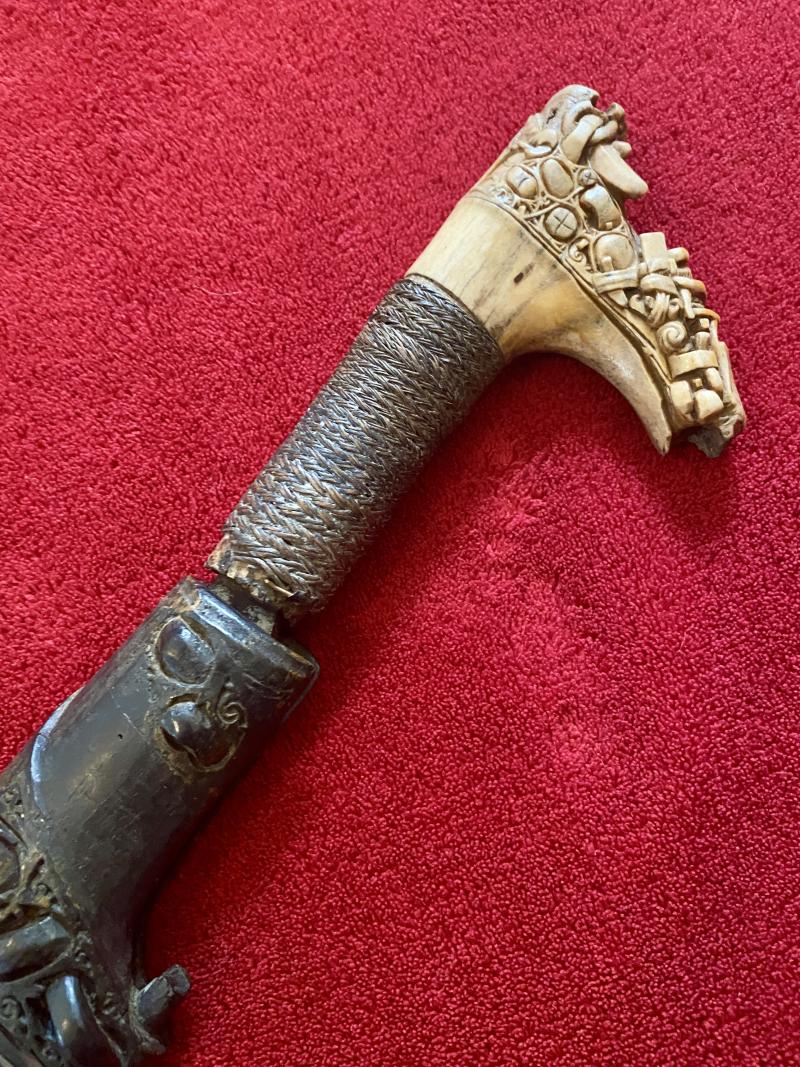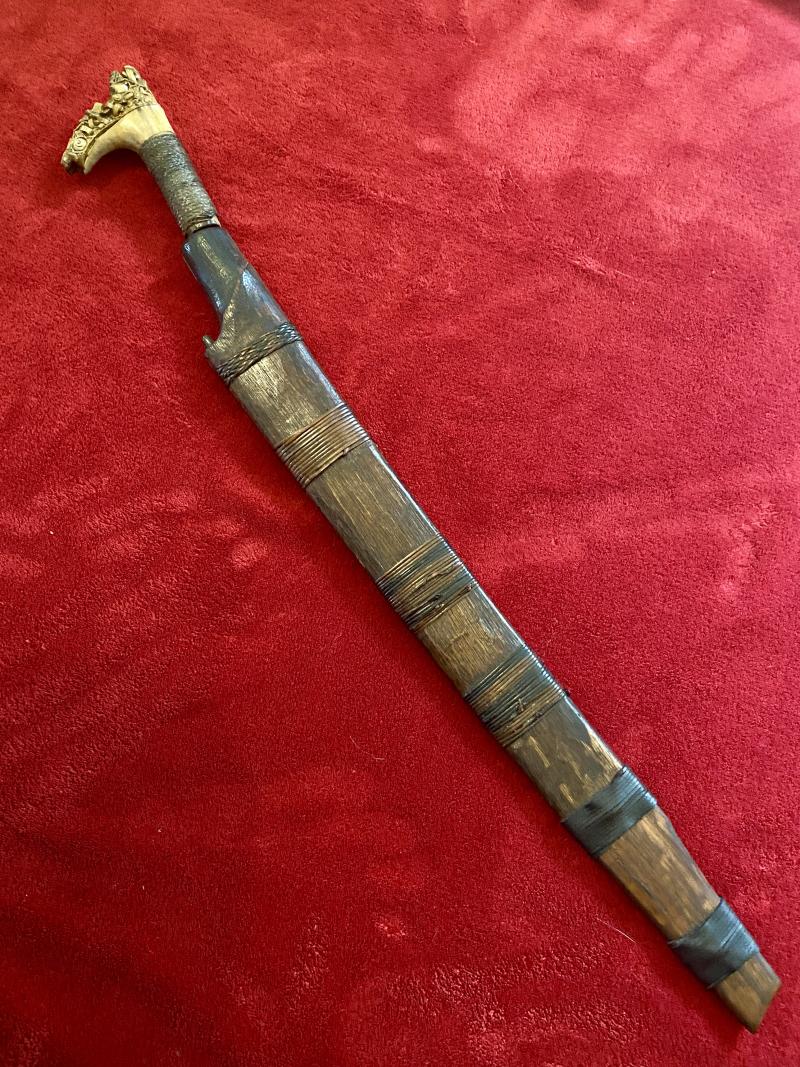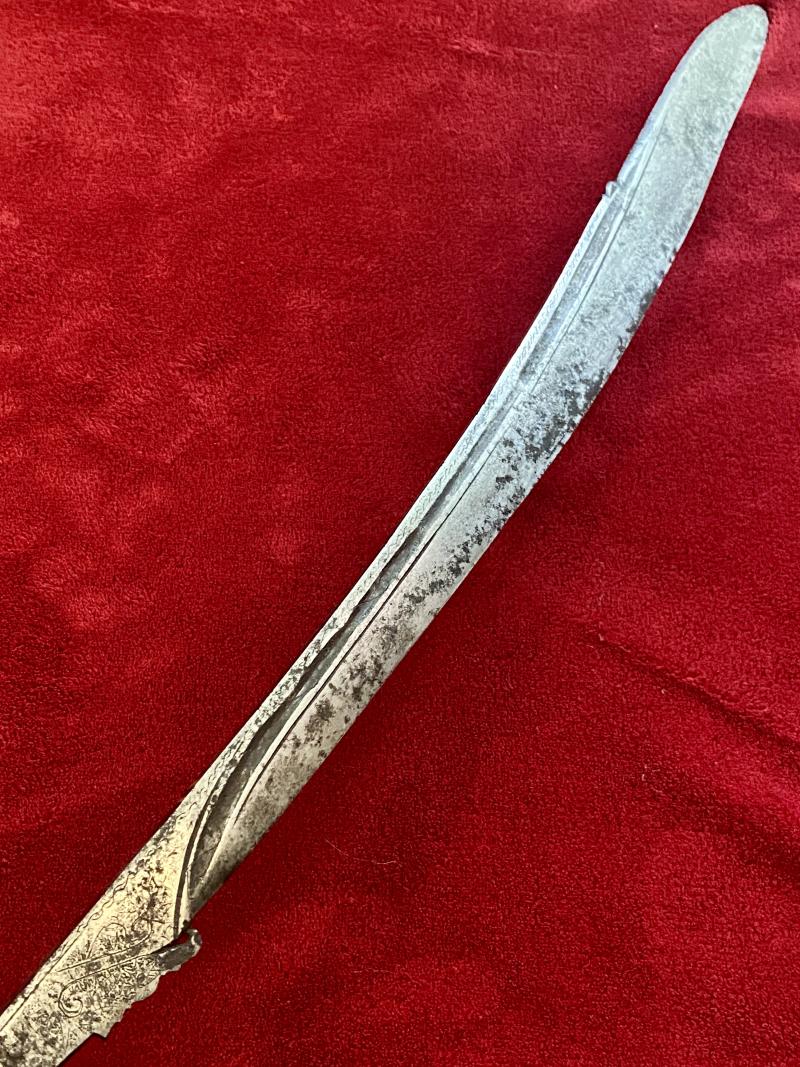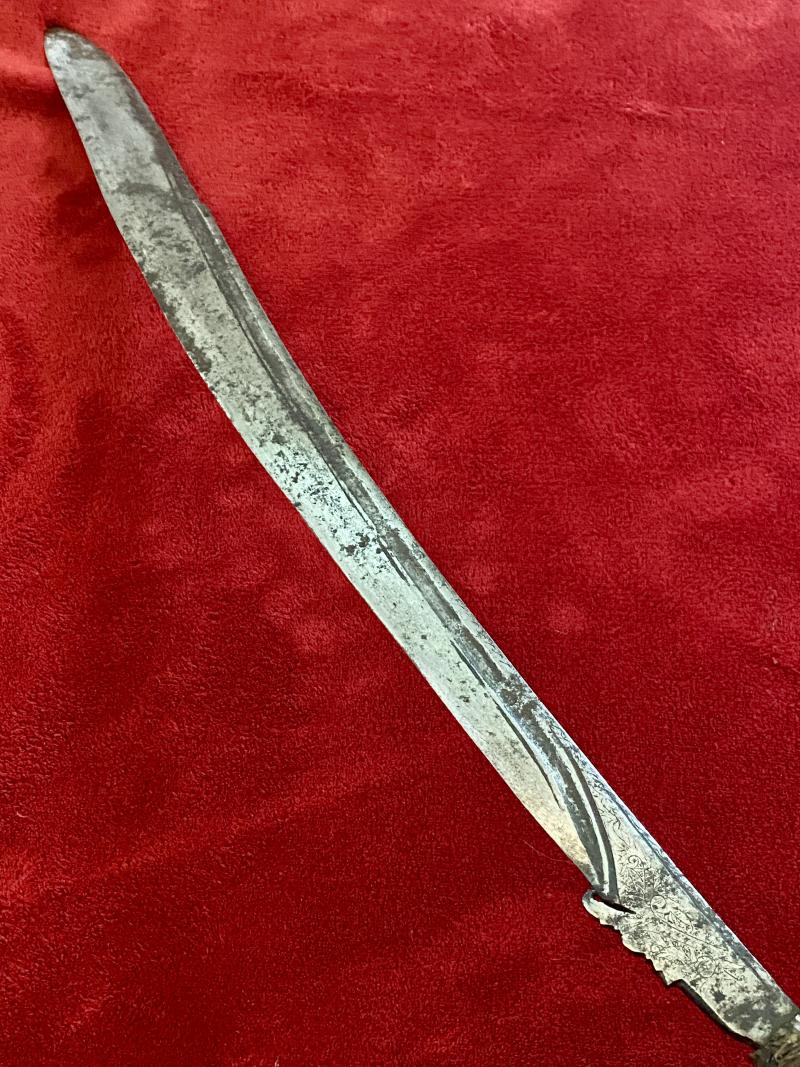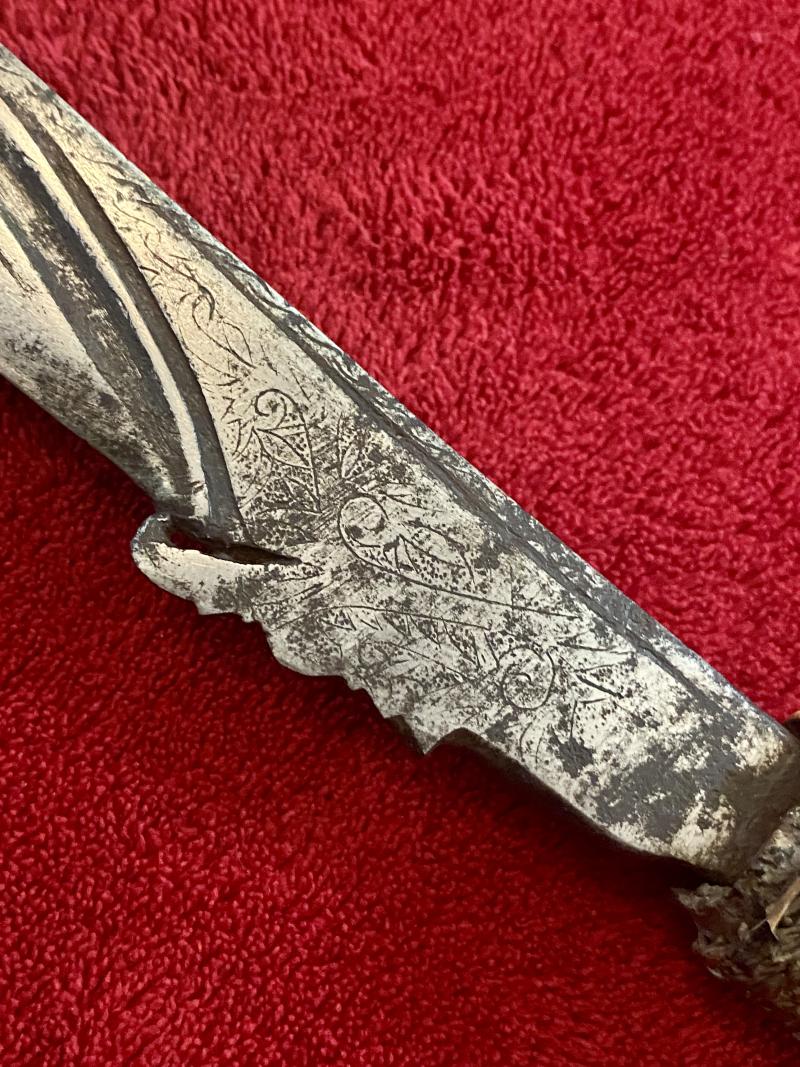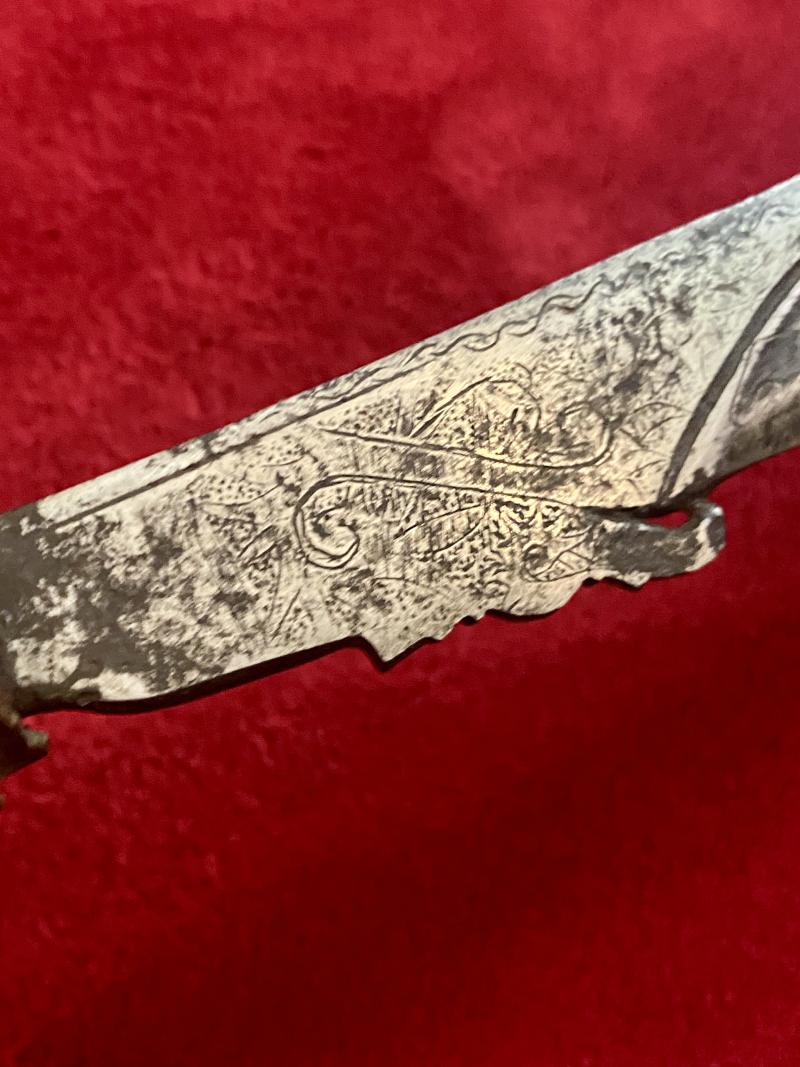19th Century Borneo Jimpul Head Hunting Sword – Dayak - Kalimantan Borneo
Here on offer is an antique fine example of what I believe is a genuine 19th century Jimpul Head Hunting Sword.
The Jimpul is a member in the family of heavy machete like swords of the Sea Dayak and the Kenyah people of Kalimantan (Borneo). Other members of the family are the Mandau, the Langgai Tinggang and the Niabor as well as few others. All associated with the head-hunting tradition. All share similarities but differ in the blade shapes and dimensions.
The wooden grip shaft is bound in braided rattan straps and is topped with an impressive pommel, that has been finely carved from bone or deer antler.
Details of the carvings vary from tribe to tribe, but mostly depict creatures or if human bones were used, anthropomorphic deities. This example seems to have the face of a Boer-like creature at the front and very fine detailed engravings around the edges. There is some loss of bone on the top.
The ends of the pommel would have originally been decorated with long white or black hair tufts, possibly human but most likely to have been from a monkey.
These early swords are known to be associated with a headhunting ceremony, where people would gather to attack other tribes and gather heads to be used in various festivities.
It has a 23” slightly curved single-edged leaf shaped heavy steel blade, that has an engraved scroll pattern near the grip and along the top edge on both sides. The top edge still has some inlaid brass lines set into it. This old blade now has dark pitting marks and age staining on both sides, but retains an impressive sharp cutting edge.
The ornately carved wooden scabbard has been made from two sections of wood, bound securely together is bound with rattan and leather straps. The two leather bands towards the tip look to be possibly a later repair/replacement?
The top section of the scabbard has been beautifully hand carved with tribal images, some of which look like “hearts”. Near the top it has a thin slot where a sash could be threaded through it, to enable the sword to be attached to a belt.
This is a fine early example that are now very hard to find and makes a really imposing display sword.
The blade is 23” (58.4cm) long and the whole sword measures 28” (71.2cm)
It weighs a heavy 915g.
Please see my pictures for the details of the condition, which complement this description.
Please see my TERMS OF BUSINESS regarding Deliver Charges and Insurance regarding additional insurance cover, should you require it, BEFORE the item is dispatched.
The responsibility lies with the customer to check with your Customs restrictions that this item can be imported into your country.
Code: 51531
450.00 GBP

